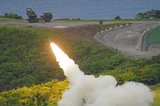One of Russia's helicopter operators, UTair Helicopters Services has embarked on a
new drive to expand its fleet and is planning to take delivery of more than 30
new-build helicopters by 2027. Most, if not all, of these aircraft will be new-generation Mi-8 derivatives such as the Mi-8AMT with an improved avionics
suite and the Mi-171A2 with its radical facelift.
Currently its fleet comprise of about 320 helicopters, with
the vast majority represented by various Mi-8 derivatives, including more than
110 Mi-8MTV/AMTs and a new-generation Mi-171A2 in addition to 170 Mi-8Ts.
Its main business in Russia is to provide transportation























